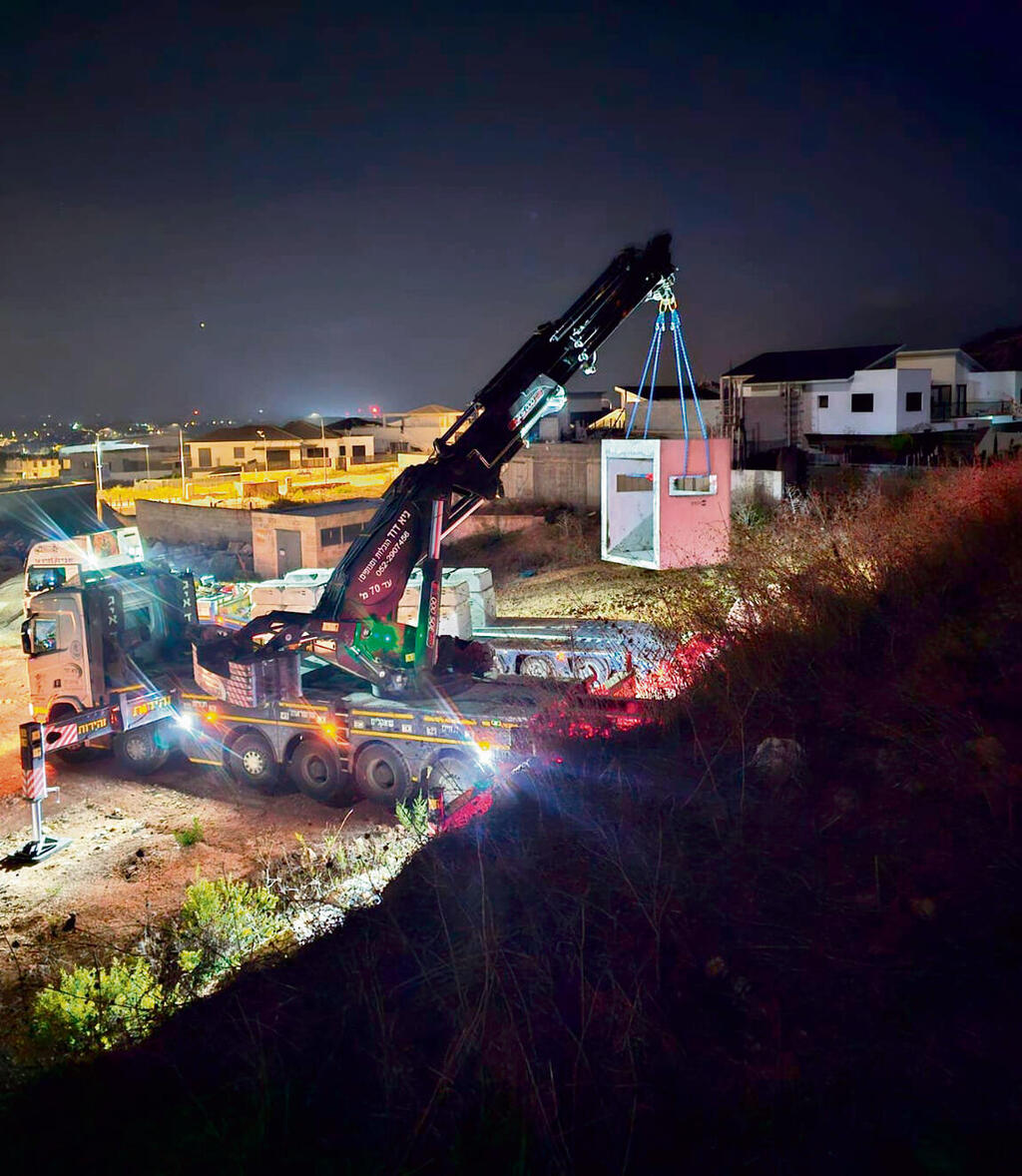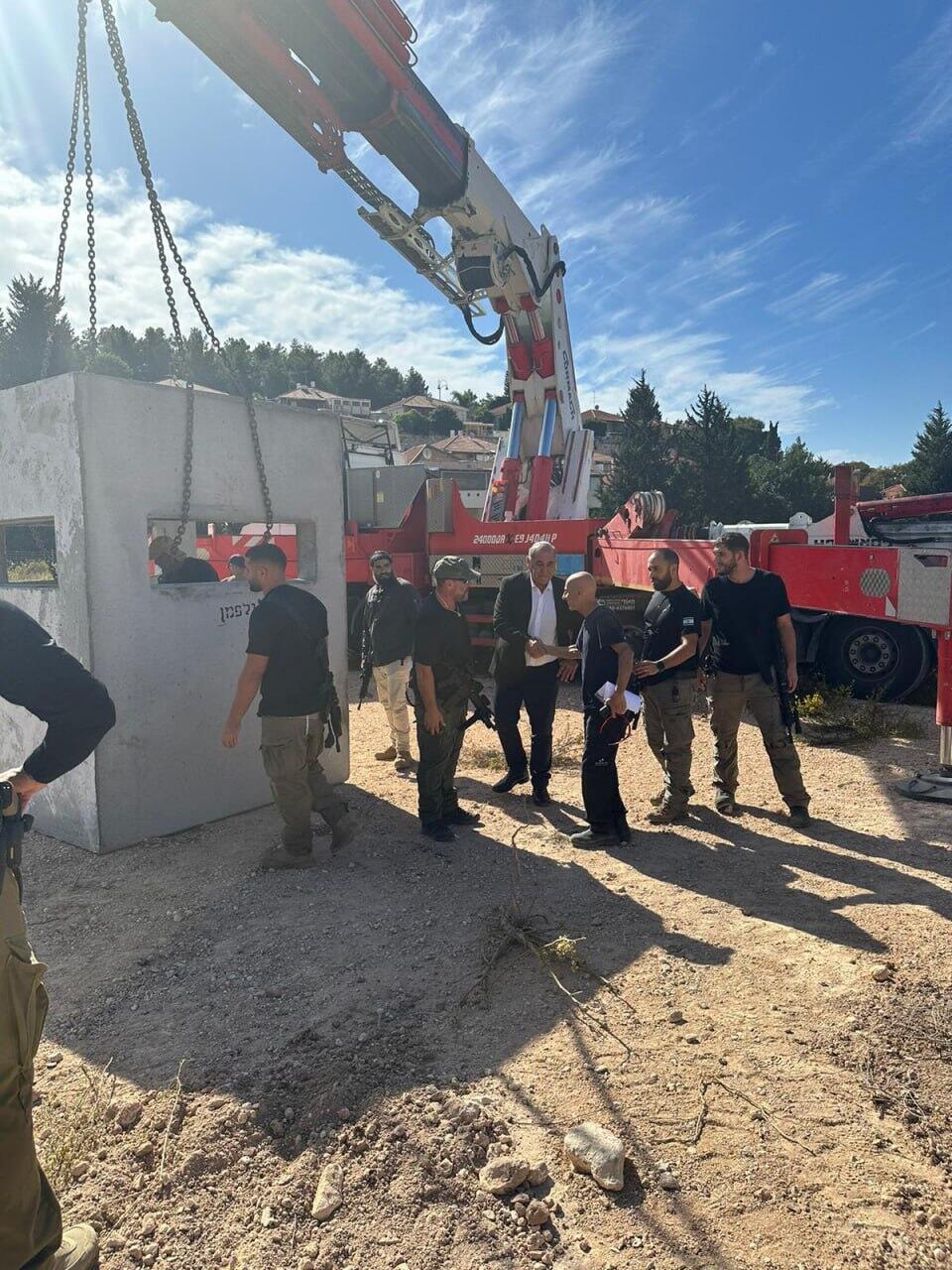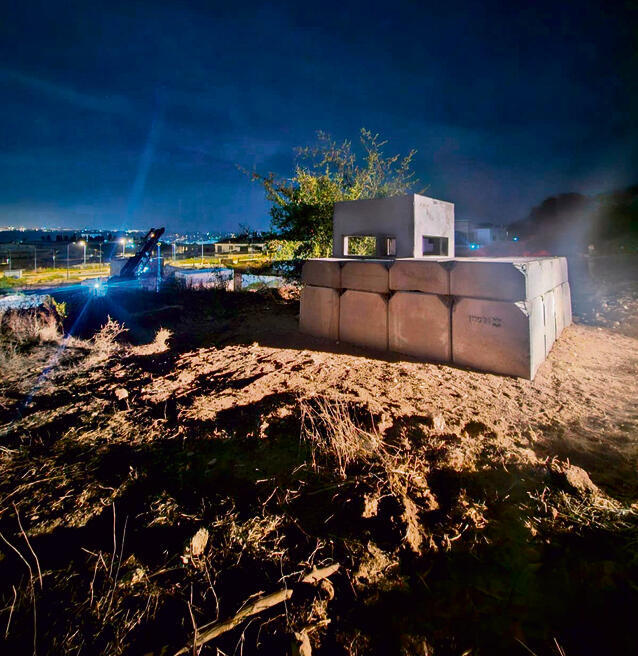Getting your Trinity Audio player ready...
An official cease-fire between Israel and Hezbollah remains elusive, yet the IDF is proactively establishing new outposts near border communities along the Lebanese border. The military is refurbishing former outposts and preparing to station combat units within communities, ensuring returning residents feel secure with a visible military presence.
Rockets intercepted over the skies of Shlomi on the Lebanese border
(Video: Shay Eiluz)
In recent weeks, the IDF has dismantled concrete walls and firing positions along confrontation line roads, which had become a gray fixture of the landscape. It has also withdrawn military forces from public buildings and evacuated areas, while working with local authorities to shape a new security framework.
In Shlomi, situated right on the border, where over 7,000 residents were evacuated in October 2023, the local council has recently installed permanent firing and defense positions around the community facing Lebanon, ready for any alert. Additionally, a military outpost with at least a company-sized force will secure the community.
This week, the Shlomi local council plans to approve three security tenders developed in anticipation of future needs. These include establishing an extensive camera network operated by a 24/7 active center, budgeting $6.6 million for a tactical combat unit patrolling around the clock with off-road vehicles, and forming a rapid response force of 60 volunteer fighters from the community.
These measures have been approved by the IDF Northern Command and the Chief of Staff, according to Gabi Naaman, head of the Shlomi Council. In recent days, senior military commanders, including brigade leaders from Golani, Kfir and the 228th Brigade, have consistently urged displaced northern residents to "return home now" through every available media platform.
These military pressures, lacking clear and coordinated statements from political leaders, are viewed by many as unauthorized interference and a detriment to the war objectives expected in the north. Naaman also sought to temper the enthusiastic calls for residents to return home, emphasizing essential conditions: "For us to return home, several critical things must happen," he told Ynet and Yedioth Ahronoth.
"One is for IDF to position itself north of Shlomi, on the mountain and into the Lebanese side, to prevent any certain infiltration. We also expect soldiers to be visibly present in front of us and within Shlomi itself, not behind us. The third requirement is completing the installation of defensive technological means to create a sense of security and visibility."
Amid frantic U.S.-pressured talks to reach a settlement to end the war in Lebanon, Naaman expressed hope that the government will prioritize national interests over global ones.
"We do not trust fabricated agreements, so the IDF must maintain a security zone for at least the coming years to ensure Hezbollah does not plan another attack on northern communities. These are the minimum conditions. It's important that the IDF remains assertive and does everything to empower politicians to negotiate the best possible agreement. I trust the prime minister more than anyone else," he said.
Naaman said the IDF should drive the required strategic change, not politicians. "The IDF is our strength and, unfortunately, also our weakness. If we end the war like a month ago, Hezbollah will only grow stronger. We don't want to beg for an agreement; we want them to be the ones begging for it," he said.
On Tuesday, Naaman, along with other local authority heads from the confrontation line, met with the new minister Ze'ev Elkin, responsible for the northern and southern administrations. Authorities have high hopes that he will succeed in rallying all government ministries to the challenge of developing the area. Naaman announced before the meeting his intention to urge Elkin to create certainty for over 60,000 northern evacuees.
"I will ask him to promote a government decision to extend the stay outside the community, as well as the benefits for residents, not just until the end of December but beyond, to provide calm for residents and ensure their return is gradual, not rushed or under distress as the evacuation was. All this, of course, on the condition the IDF provides absolute security, achieving the main objective of the war in the north and not a moment before."
Keeping a visible contact line whether an agreement is reached this week or postponed, IDF troops continue daily operations beyond the border to expose more areas and "clean" the buffer zone, previously tangled and concealed from the army's view. In the western sector, engineering forces and the 146th Division fighters lead the "plowing" efforts on the ground.
The military warns that without daily maintenance of this line – from the sea at Rosh Hanikra to Mount Dov – to ensure it remains clear, or without physically remaining there, it will be challenging to guarantee security for residents along the border line. Already now, after heavy rains, vegetation is growing again, and must be cleared.
This will likely be a sticking point with Hezbollah, which will insist on withdrawing all Israeli forces beyond the border fence, potentially creating a significant obstacle in any emerging arrangement. There is concern that the Iranian-funded terrorist organization will quickly seek to cover the area again with dense, concealing foliage.
Residents can no longer agree to a demand that would return the obscured view the army suffered from before October 6, 2023. Alongside targeted raids in southern Lebanon, with relatively fewer forces than those in Lebanon in recent weeks, the IDF reports that the maneuver to thwart the northern attack plan has been completed, and forces await further instructions from the political echelon.
A senior military source noted that, under current conditions, residents can begin renovating damaged homes and preparing them for their return. This is based on the assumption that, following the rocket fire pushed away from the contact line with Israel, it is safer to move around evacuated communities than it was in the past year.
The IDF assesses that the current rocket threat from Hezbollah is not significantly different between many evacuated communities and cities like Nahariya, Acre, or communities adjacent to Haifa such as Kiryat Motzkin, all of which are targeted daily.
Get the Ynetnews app on your smartphone:









